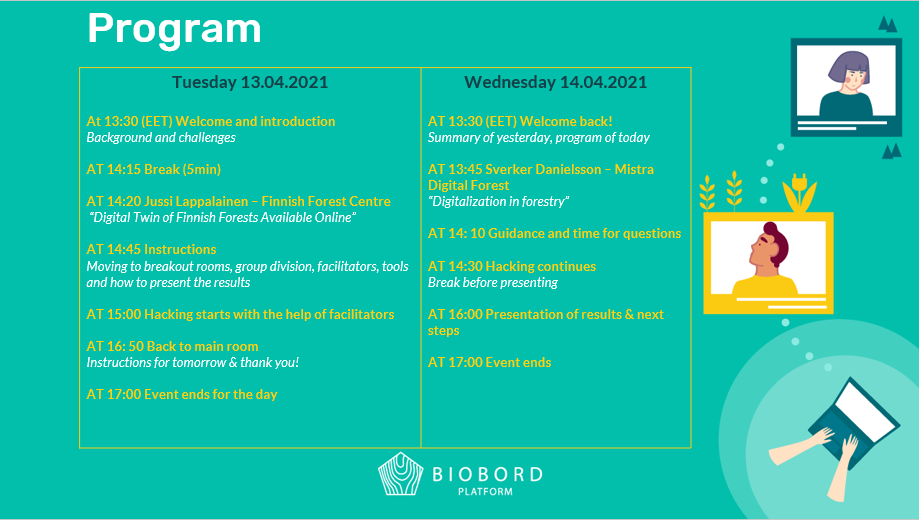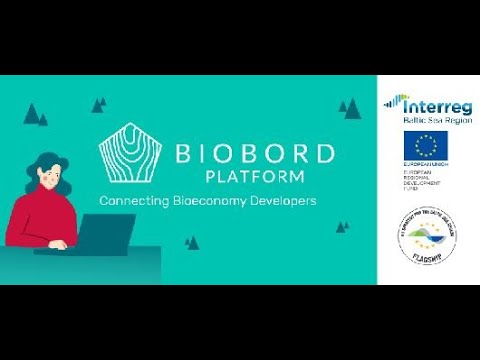Hackathon challenges:
Background.
Forestry sector in Norway, Sweden and Finland represent the forerunning performance based on top-level information. The newest developments in technologies open opportunities for even higher benefits in utilization of forest, nature, and timber measurement data.
Thus, the bodies in charge of managing the forest and nature information systems, are looking for new ideas to renew data collection, management and utilization methods, and technical solutions for the next generation forest information systems. Three major areas of challenges can be seen today:
- Forest inventory information is shown and handled maximum at stand level. Lot of quality information of trees and nature points of interest is not detected or is lost in the big picture.
- Big amount of data measured and collected during a value chain is not fully utilized. A continuous flow of information through the digital value chain from stump to product is broken in many parts.
- A platform and a protocol for a holistic forest information ecosystem is too scattered, where data from various sources cannot be collected and managed by a way that enables efficient utilization of information and up-dates of the databases.
Challenge 1: Methods for more detailed and accurate data from forests. (accurate data)
We are calling ideas for detecting and registering location and quality attributes of single trees in a forest. An ideal outcome of the method would be a “tree map”, where each individual tree has known location and sufficient information of its quality. Additional detected interesting points of nature would be a bonus.
Applicability to forest inventory systems in place, benefits vs. costs, and reliability are crucial criteria for the solution.
Challenge 2: A service platform for the forest information ecosystem. (tracing quality)
We are calling ideas for enabling management of forest data from shattered sources. Information services provided by the system can be used e.g. for completing our knowledge about the forest resources, and enhancing performances of various forestry related actions. One question is, can massive forest inventory campaigns be avoided in future by up-dating the databases with information from various daily based actions?
Crucial criteria is, how the platform can be adopted to existing forest information infrastructure, what is the data sources, and what services it would offer.
Challenge 3: Tracing quality for increased value creation (tracing quality)
Standardizing is a key component when working across entities. Protocols and procedures must be agreed upon to establish and maintain a stable and efficient data flow between partners. A common protocol for the collection and transfer of data from harvester to sawmill is established in StandForD. Individual log-tracing systems are under development but not yet implemented.
- How do we technically, organizationally, and financially establish a Nordic opensource solution for storage and sharing of all these data?
- How and where can value be crated, delivered, and captured by establishing a functional data flow for tracing individual logs between entities in the value chain?
Challenge 4: Combination of data to build digital twins. (digital twin)
How to increase sustainability and efficiency in the forest industry by utilizing digital twins?
New technology allows us to develop digital models of a defined forested area by using measurements from harvesters, arial photography, GPS and Lidar to form a digital twin. A digital twin is a precise visual representation of the landscape, which potentially can be utilized to help plan and execute processes within the forestry value chain in a more efficient way.
- Solutions for autonomous (or nearly autonomous) harvesting, forwarding, scarification, planting.
- Can single tree information add value to the forest management (e.g., thinning) and for the whole value chain (e.g. especially valuable products)?
- How and at what levels can a digital twin potentially be used to create value in the forest value chain and increase environmental sustainability?




